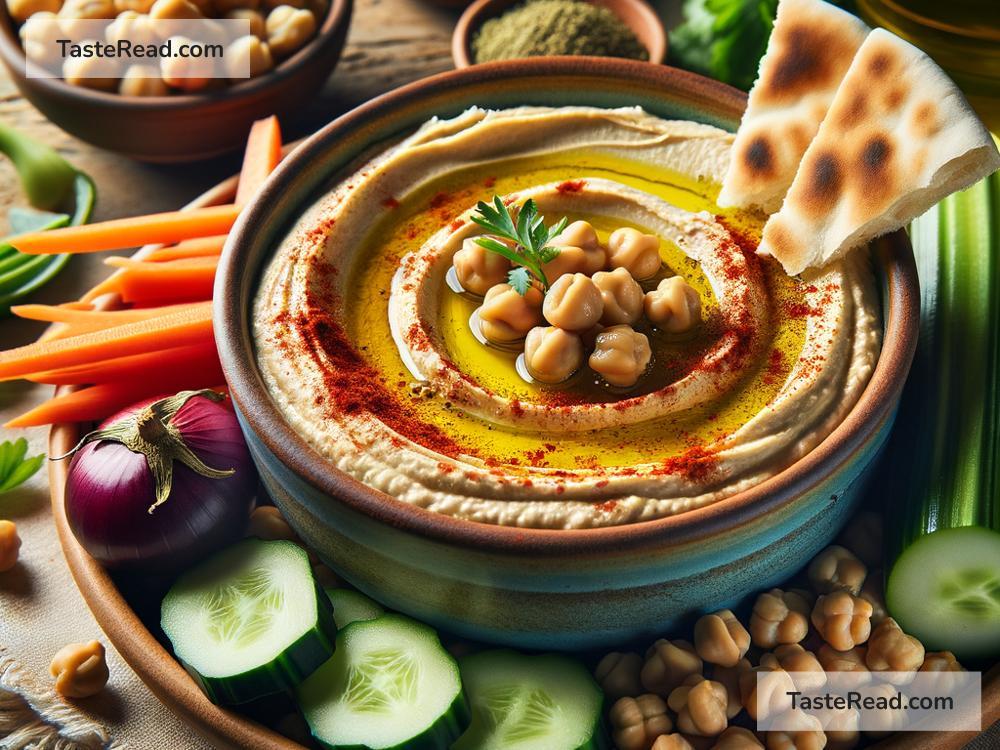Unlock the Flavors of Lebanon: How to Make Authentic Hummus From Scratch
Hummus, a creamy and delightful dip, has remarkably crossed borders from its Lebanese roots to gain worldwide adoration. Whether scooped up with warm, fluffy pita or served alongside crunchy vegetables, hummus brings a piece of Lebanese culinary tradition to your table. Making hummus from scratch is simpler than you might think and far surpasses the taste of store-bought varieties. Here’s a step-by-step guide to creating your own Lebanese hummus.
Ingredients You’ll Need:
- 1 cup of dried chickpeas (or 2 cups of canned chickpeas for a quicker alternative)
- Baking soda (1 tsp for soaking dried chickpeas)
- Fresh, cold water
- Juice of 1 large lemon (about ¼ cup)
- 1 to 2 garlic cloves, minced
- ½ cup of tahini (sesame paste)
- Salt, to taste
- Ice water (2 to 3 tablespoons, or as needed)
- Extra virgin olive oil, for serving
- Paprika or sumac, for garnish
- Fresh chopped parsley, for garnish (optional)
Optional for Serving:
- Warm, soft pita bread
- Sliced vegetables like carrots, cucumbers, or bell peppers
Tools:
- A food processor or high-power blender
- A large bowl
- A saucepan (if using dried chickpeas)
- A colander
Let’s Dive Into the Process:
1. Preparing the Chickpeas:
If you’re using dried chickpeas, you’ve got a bit of preparation ahead. Soak the chickpeas overnight in a large bowl with enough water to cover them by at least 2 inches and add a teaspoon of baking soda. This softens the chickpeas and makes them easier to cook. The next day, drain and rinse them, then place them in a saucepan with fresh water. Boil, then simmer for about an hour or until tender. If you’ve pressed the snooze too many times and are short on time, canned chickpeas are your best friend. Just rinse and drain them, and you’re good to go.
2. Creating the Base:
Once your chickpeas are cooked or drained, reserve a few whole chickpeas for garnish. Pop the rest into your food processor. Add the minced garlic, salt, and lemon juice. Whizz everything together until the chickpeas look crumbled.
3. Introducing Tahini:
Now add the tahini. Tahini is what gives hummus that unmistakable flavor, so don’t skip it! Blend again until the mixture starts coming together.
4. Achieving Creaminess:
Here’s where the magic happens. With your food processor running, drizzle in ice water, one tablespoon at a time, until the hummus becomes smooth and creamy. The ice water not only helps to blend the ingredients but also brings out the brightness in the hummus.
5. Taste Testing:
Give your hummus a taste. This is your opportunity to adjust the flavors to your liking. Does it need more lemon? More garlic? A bit more salt? Once it tastes just right to you, scoop it into your serving dish.
6. The Grand Finale – Garnish and Serve:
Drizzle a generous amount of olive oil over your hummus. Sprinkle some paprika or sumac on top for that extra punch of flavor and color. If you saved a few chickpeas, scatter them around for a rustic look. Adding some chopped parsley will make the colors pop even more.
Serve your homemade Lebanese hummus with warm, freshly baked pita or a rainbow of raw veggies. It’s the perfect appetizer, snack, or addition to a meze platter.
The Joy of Homemade Hummus:
There’s something extremely satisfying about making hummus from scratch. Not only does it taste fresher, but you also get to control the quality and quantity of ingredients. Hummus is not just a dip; it’s a celebration of simple ingredients coming together to create something deliciously complex in flavor and texture.
Embrace the process, enjoy the flavors, and don’t forget to share this culinary delight. Who knew that a bowl of hummus could offer so much more than just a tasty snack? It’s a journey through Lebanese culture, a testament to the power of simplicity, and a bridge connecting food lovers around the globe.
From my kitchen to yours, happy hummus making!


